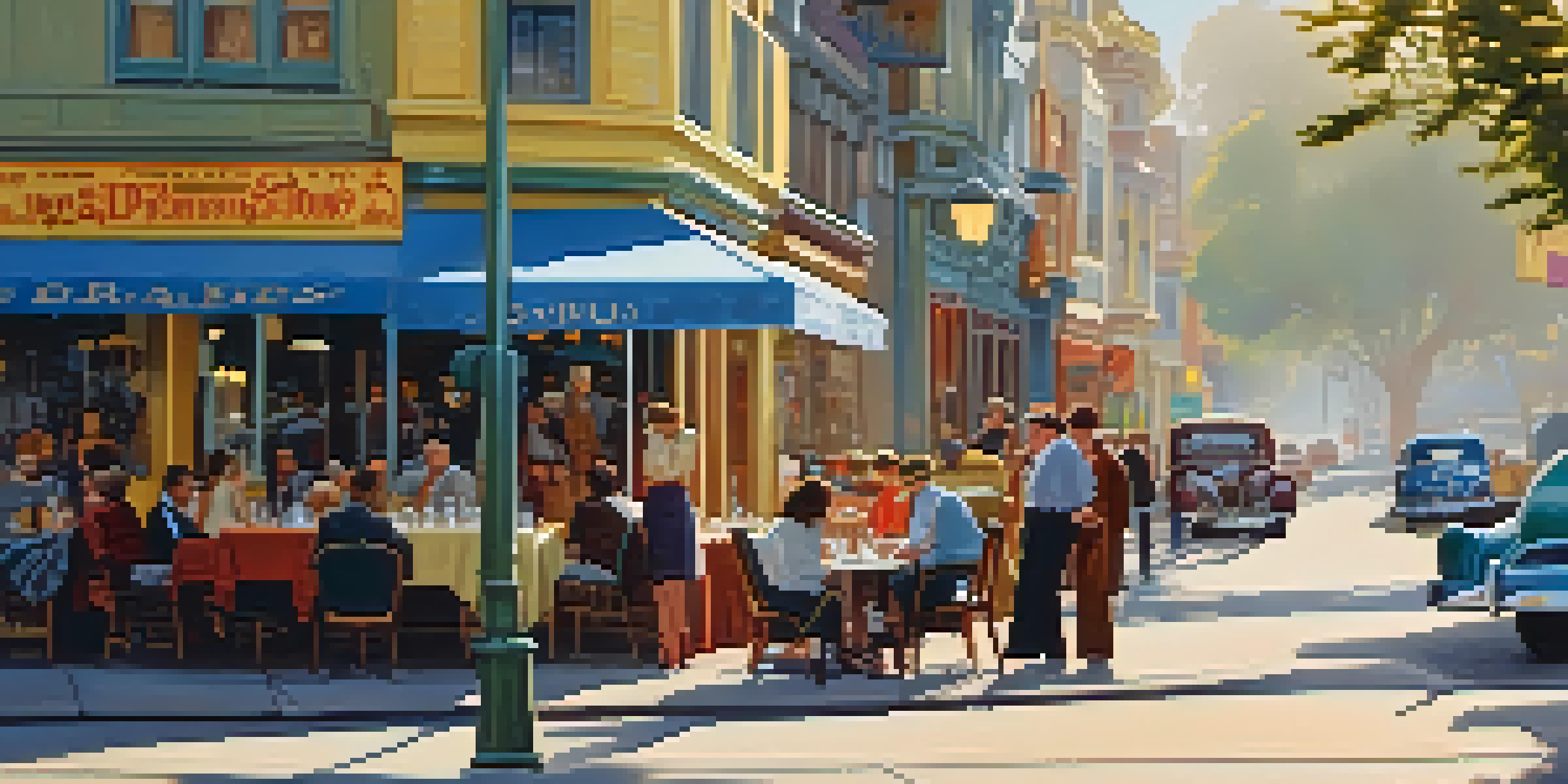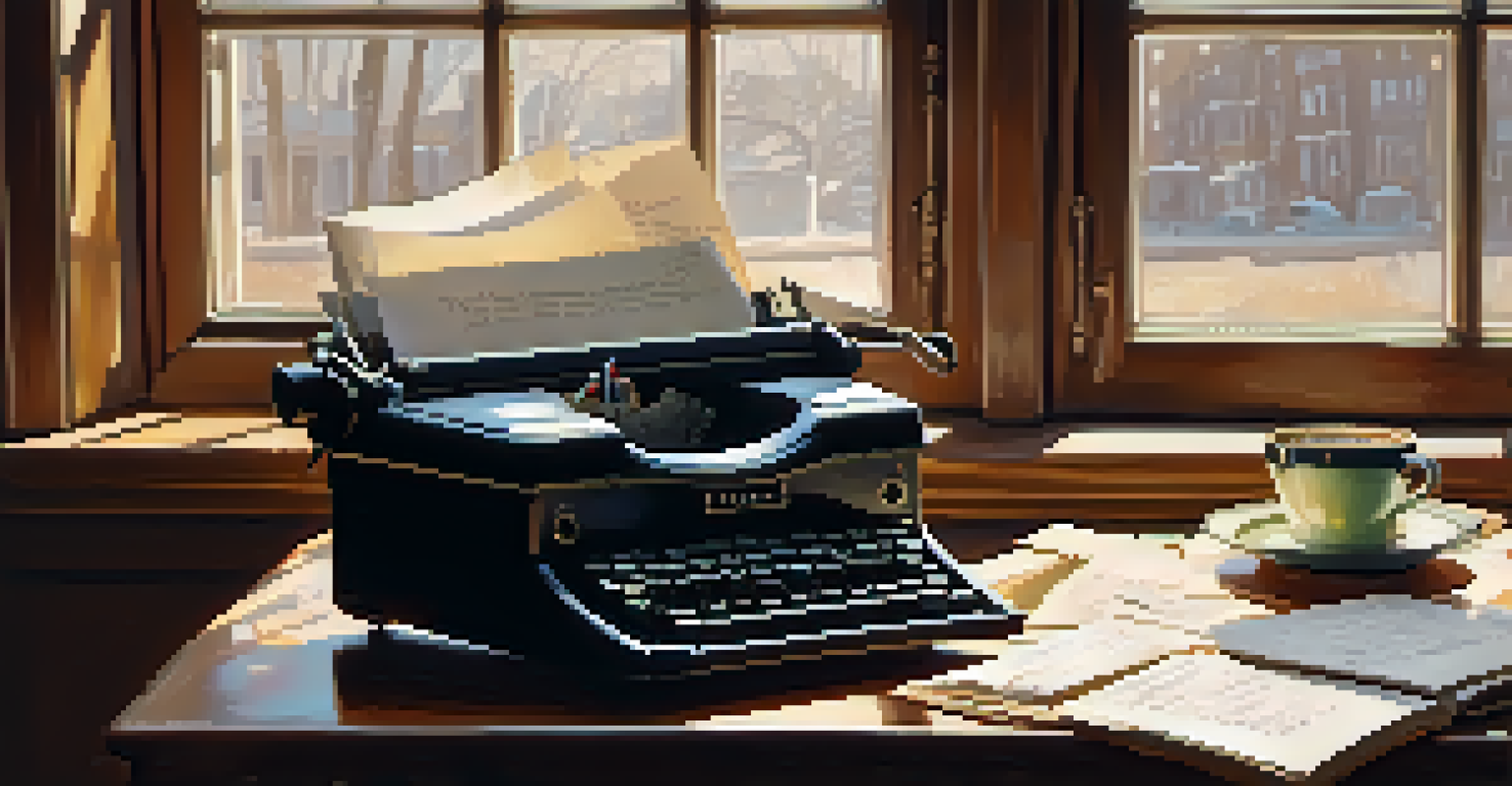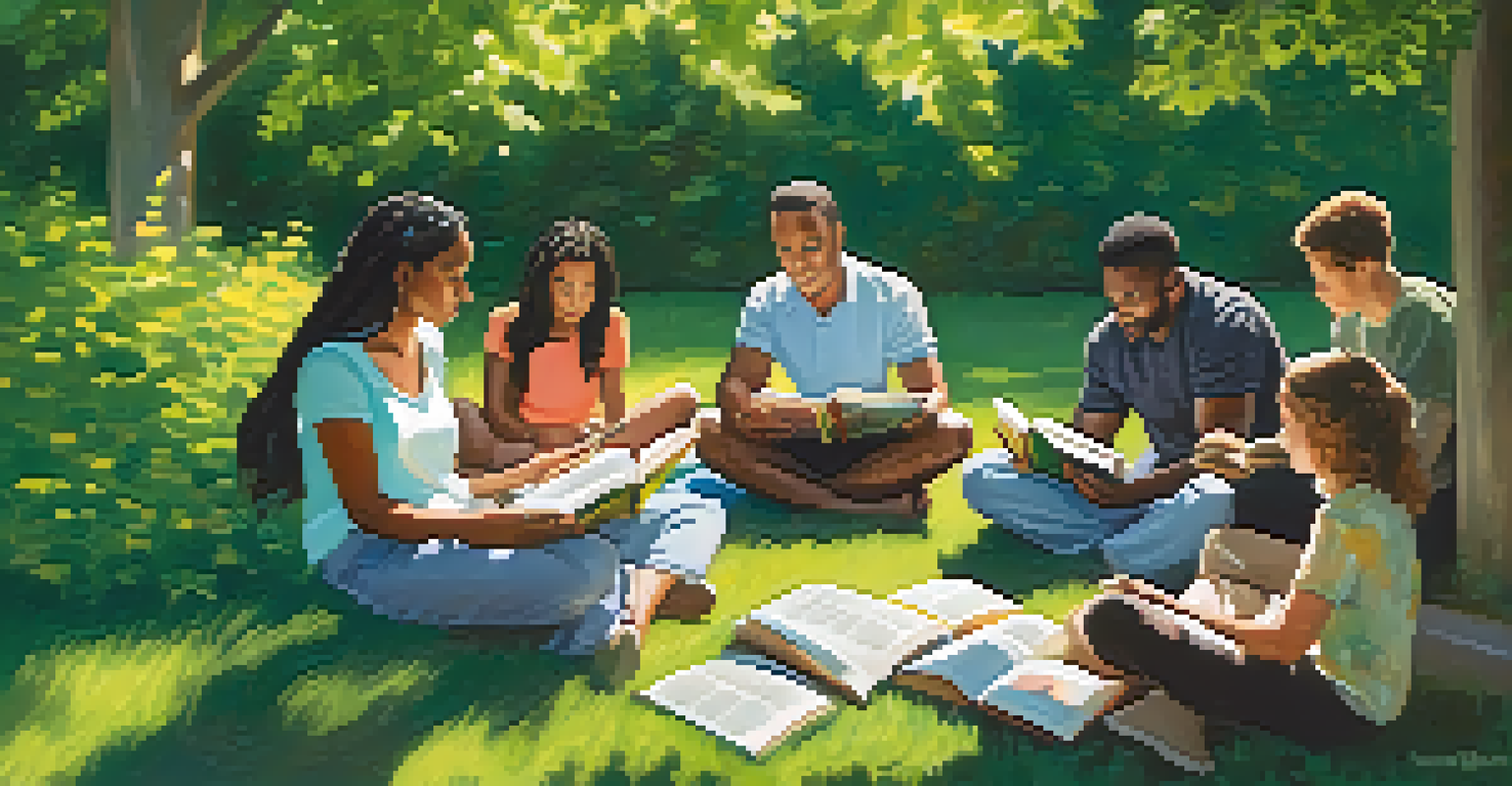Exploring the Literary Legacy of San Francisco's Beat Generation

Understanding the Beat Generation: A Brief Overview
The Beat Generation emerged in the 1950s, primarily in San Francisco, as a response to the conservative norms of post-war America. It was characterized by a rejection of materialism, exploration of spirituality, and a celebration of spontaneity in art and life. Key figures like Jack Kerouac and Allen Ginsberg became synonymous with this literary movement, using their works to voice rebellion against societal constraints.
The only people for me are the mad ones, the ones who are mad to live, mad to talk, mad to be saved, desirous of everything at the same time, the ones who never yawn or say a commonplace thing, but burn, burn, burn like fabulous yellow roman candles exploding like spiders across the stars.
The Beats were not just writers; they were cultural icons who influenced music, art, and social movements. Their works often reflected their experiences with drugs, sexuality, and existentialism, paving the way for future generations of artists and thinkers. San Francisco, with its vibrant culture and countercultural spirit, served as a perfect backdrop for their revolutionary ideas.
This section sets the stage for understanding how the Beat Generation not only shaped literature but also left an indelible mark on American culture. Their legacy still resonates today, encouraging a spirit of inquiry and creativity in contemporary society.
Key Figures: Who Were the Beats?
The Beat Generation boasted a cast of iconic figures whose works challenged conventional literary forms. Jack Kerouac, often regarded as the leader of the movement, is best known for his spontaneous prose style showcased in 'On the Road.' His journeys across America reflected the restless spirit of the 1950s youth, capturing the essence of freedom and exploration.

Allen Ginsberg, another luminary of this era, gained fame with his poem 'Howl,' which depicted the struggles of his generation. His candid exploration of sexuality, mental health, and societal critique broke barriers and resonated with many. Together with writers like William S. Burroughs and Lawrence Ferlinghetti, they forged a new path in American literature.
The Beat Generation's Cultural Impact
The Beat Generation reshaped American culture by challenging societal norms and paving the way for future artistic movements.
These key figures not only produced groundbreaking works but also formed a community that supported and inspired one another. Their friendships and collaborations highlight the collaborative nature of the Beat Generation, showcasing how collective creativity can lead to profound cultural shifts.
San Francisco: The Heart of the Beat Movement
San Francisco played a pivotal role in the emergence and development of the Beat Generation. The city’s neighborhoods, especially North Beach, became hubs for artists, writers, and musicians seeking to break free from societal norms. Cafés like City Lights Bookstore and Vesuvio Café served as meeting spots for Beats to share their works and ideas.
I saw the best minds of my generation destroyed by madness, starving hysterical naked, dragging themselves through the negro streets at dawn looking for an angry fix.
The city’s diverse culture and open-mindedness provided fertile ground for experimentation and innovation. It was here that poets recited their verses, and writers shared their manuscripts, fostering a sense of community that was vital to the movement's growth. The vibrant atmosphere encouraged the Beats to explore themes of spirituality, sexuality, and social justice.
Today, walking through San Francisco, one can still feel the echoes of the Beat Generation in its streets and establishments. The city continues to celebrate this legacy, making it a pilgrimage site for those inspired by the Beats’ revolutionary spirit.
The Literary Style of the Beats: Breaking Boundaries
One of the defining features of Beat literature is its unique style, which often defied traditional norms. The Beats embraced spontaneity, writing in a free-flowing manner that prioritized emotion and experience over structure. This approach led to a new wave of poetry and prose that resonated deeply with readers, encouraging them to reflect on their own lives.
Kerouac's 'stream of consciousness' technique exemplified this style, as he sought to capture the essence of thought in real-time. Similarly, Ginsberg's raw and powerful language in 'Howl' challenged readers to confront uncomfortable truths. Through their innovative techniques, the Beats opened doors for future writers to experiment with form and content.
Key Figures and Their Influence
Prominent figures like Jack Kerouac and Allen Ginsberg introduced innovative literary styles and themes that continue to inspire modern writers.
This literary rebellion not only influenced contemporaries but also paved the way for subsequent movements like postmodernism. By breaking down barriers, the Beats encouraged writers to explore their authenticity and push the limits of creative expression.
Themes and Motifs in Beat Literature
The literature of the Beat Generation is rich with recurring themes that reflect the complexities of the human experience. Central to their works is the quest for identity, with many Beat writers exploring their own struggles with self-discovery and societal expectations. This theme resonates particularly with young readers seeking to understand their place in the world.
Another significant motif is the exploration of spirituality and the pursuit of enlightenment. The Beats often drew inspiration from Eastern philosophies, incorporating elements of Buddhism and mysticism into their writing. This quest for deeper meaning is evident in Ginsberg's search for transcendence and Kerouac's reflections on the divine.
Finally, the Beats addressed social issues, including race, sexuality, and political dissent. Their willingness to confront these topics head-on has inspired generations to engage in critical discussions and advocate for change, demonstrating the enduring power of literature as a tool for social commentary.
The Beat Generation's Influence on Modern Literature
The impact of the Beat Generation extends far beyond the 1950s, influencing countless writers and genres that followed. Contemporary poets and novelists often cite the Beats as a source of inspiration for their own work, particularly in their approach to authenticity and self-expression. This legacy is evident in the raw, confessional styles of many modern authors.
Genres like spoken word poetry and slam have roots in the Beat movement, showcasing its lasting effect on performance art. The Beats' emphasis on the spoken word and live readings helped to popularize poetry as an engaging, accessible form of expression that continues to thrive today.
Legacy Through Preservation Efforts
Museums and cultural events dedicated to the Beats ensure that their revolutionary spirit and contributions to literature are celebrated and remembered.
Moreover, the Beats' challenge to societal norms has sparked discussions around identity, culture, and politics in literature. Their legacy encourages modern writers to explore taboo subjects and embrace vulnerability, fostering an environment where diverse voices can be heard and celebrated.
Preserving the Beat Legacy: Museums and Cultural Events
To honor the literary legacy of the Beat Generation, various museums and cultural events have been established in San Francisco and beyond. The Beat Museum in North Beach offers visitors a chance to immerse themselves in the lives and works of Beat writers. Exhibitions feature rare manuscripts, photographs, and artifacts, providing insight into the movement's history.
Additionally, annual events like the San Francisco Beat Festival celebrate the Beats' contributions to literature and culture. These gatherings bring together writers, artists, and fans to share their work and engage in discussions about the ongoing relevance of the Beat Generation. Such events ensure that the spirit of the Beats continues to inspire and provoke thought.

Through these efforts, the Beat Generation's legacy is preserved for future generations, fostering an appreciation for the creativity and courage that defined this iconic movement. As new voices emerge, the influence of the Beats remains a crucial part of the literary landscape.